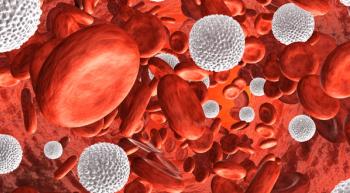
Predicting Secondary Cancers in Hodgkin Lymphoma Survivors
Two small genetic variations predict which patients are most likely to develop second cancers.
Hodgkin lymphoma is one of the few curable cancers and generally, people with this disease live a long time. I’ve always been curious to know why some people live cancer-free while others develop another cancer. In the past, the development of secondary cancers has been attributed to old-time treatment with alkylating agents or radiation scattering to nearby tissue and organs. Recent genetic research now provides some insight into why some people who receive Hodgkin lymphoma treatment develop secondary cancers.
Researchers at the University of Chicago Medical Center have identified 2 small genetic variations that predict which Hodgkin lymphoma survivors are most likely to develop radiation-induced second cancers. Although 90% of people with Hodgkin lymphoma survive the disease after undergoing radiation and chemotherapy, about 20% of those treated as children develop a second cancer within 30 years. To try to determine why this occurs, the researchers analyzed the genomes of 178 patients with Hodgkin lymphoma who had received radiation and chemotherapy when they were 8-20 years old. In this group, 96 developed secondary cancers over the ensuing 30 years. When each person's genome was scanned, the researchers found three single nucleotide polymorphisms that appeared far more often in the people who developed secondary cancers. Two of the three markers remained significant in a second set of patients, 62 of whom developed a second cancer and 71 of whom did not. Those two markers are positioned near the PRDM1 gene, and appeared to decrease activation of the gene but had no detectable effect on any other genes. Cells with the protective version of both markers expressed PRDM1 after being exposed to radiation. Cells with the variants linked to subsequent cancers did not produce any PRDM1. The researchers concluded that this newly identified gene-exposure interaction that may implicate PRDM1 in the etiology of radiation therapy-induced secondary cancers.
Source:
Morton LM, Chanock SJ. A step toward slaying the hydra of second cancers. Nature Medicine 2011;17(8): 924-925.
Newsletter
Knowledge is power. Don’t miss the most recent breakthroughs in cancer care.
















































































